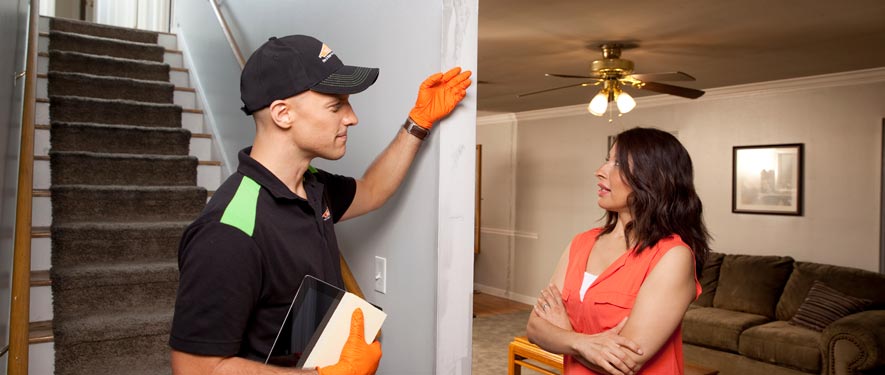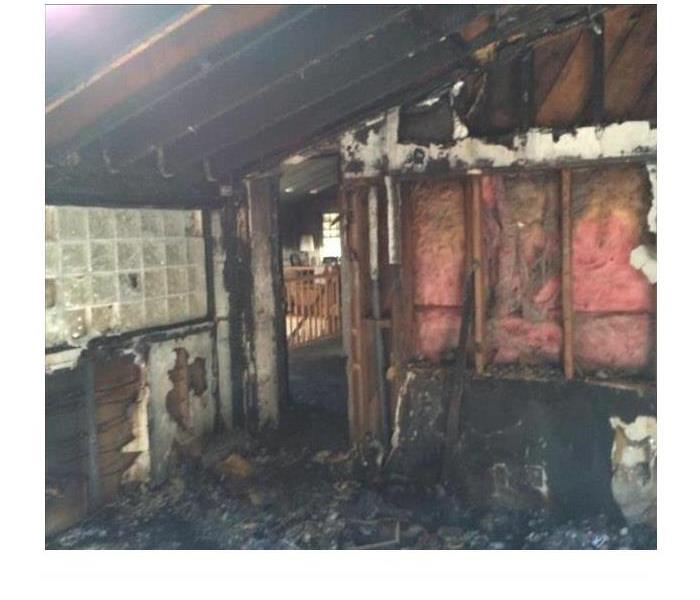
Fire Damage Restoration Process
Repairing Smoke Damage to Walls
With fires there will always be a degree of smoke damage to your walls, wall paper & paint. If the smoke damage is not too serious, you should be able to scrub it clean with detergents and bleach. Note: soot from smoke damage is greasy stuff so you should always try to dust as much of it off from a surface before trying to scrub it clean. Often, you’ll want to repaint, too.
Getting Rid of Mold & Mildew
Another huge issue in fire damage restoration is actually introduced by the water used to extinguish a fire. This problem is mold and mildew, & requires special attention. We highly recommend fire damage restoration professionals to deal with mold and mildew, because it can cause serious health problems, & can contaminate furniture, carpets, clothing, mattresses, walls/vents. You should immediately air out every room & clean out all vents.
Repairing Flooring & Carpet
With all the water that is involved in putting out a fire, your floors & carpets will end up absorbing the worst of it. In almost every case, it’s recommended that you pull up any carpets that have water damage & replace them. Water can also seep underneath vinyl flooring and into cracks of hardwood, and will need to be addressed. If you have experience with flooring, you can lift it up & clean under them, but you may want to call SERVPRO of Central Glendale to assist you.
Have Questions About Fire, Smoke, or Soot Damage? Call Today – (818) 246-2200
Every fire damage event is a little different, and requires a unique solution, but the general process stays the same. The steps listed below illustrate our process for the “typical” fire damage emergency.
Step 1: Emergency Contact
The restoration process begins when you call us. Our representative will ask questions regarding the fire damage event that will help us respond immediately with the appropriate equipment and resources.
Step 2: Inspection and Fire Damage Assessment
We carefully inspect and test adjoining rooms of your property to determine the extent of the fire, smoke, and soot damage. This step is crucial to developing a plan of action.
Step 3: Immediate Board-Up and Roof-Tarp Service
Fire damage can often compromise windows, walls, and roofs. To maintain security and to protect against further damage, we can board up missing windows and walls and place tarps on damaged roofs.
Step 4: Water Removal and Drying (if water damage is present)
The water removal process begins almost immediately and removes the majority of the water. We then use dehumidifiers and air movers to remove the remaining water and complete the drying process.
Step 5: Removal of Smoke and Soot from All Surfaces
We use specialized equipment and techniques to remove smoke and soot from ceilings, walls, and other surfaces.
Step 6: Cleaning and Sanitizing
We clean, sanitize, and disinfect all of the restorable items and structures that were damaged by the fire. We use a variety of cleaning techniques to restore your belongings to pre-fire condition. We’re also trained to remove odors using industrial air scrubbers and fogging equipment.
Step 7: Restoration
Restoration is the final step—getting your home or business to its pre-fire condition. Restoration may involve minor repairs, such as replacing drywall, painting, and installing new carpet; or it may entail major repairs such as the reconstruction of various areas or rooms in a home or business.






 24/7 Emergency Service
24/7 Emergency Service




